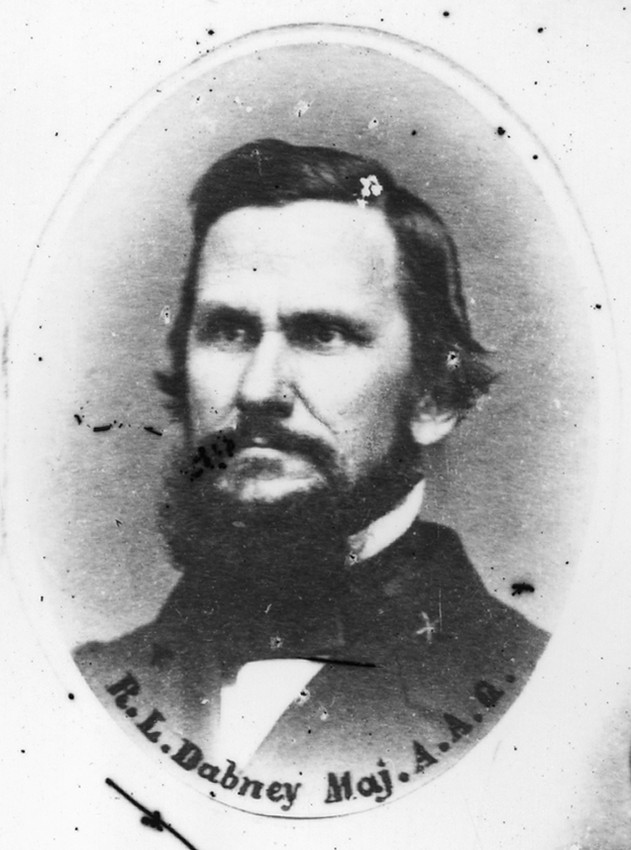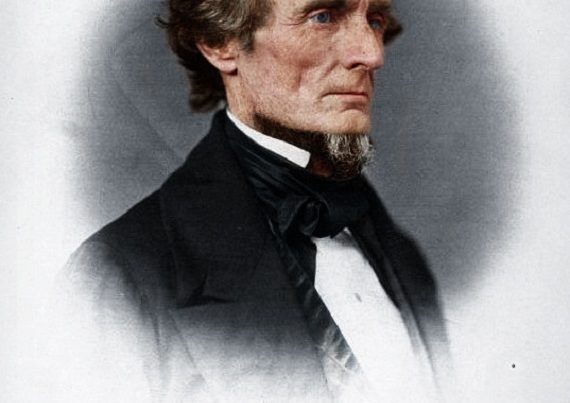
Presbyterianism has a rich legacy in American history. The Presbyterian church was founded in Scotland by John Knox (d. 1572), a disciple of John Calvin. Along with the Dutch Reformed and New England Puritans, the Presbyterians brought Reformed theology to the New World. Scottish and Irish immigrants introduced Presbyterianism to the American colonies in the 18th century, and the first presbytery was established in Philadelphia in 1706. (A presbytery is a governing body of ministers in a particular district.)
Several prominent American statesmen were Presbyterian, including John Witherspoon (1723–1794), the only active clergyman to sign the Declaration of Independence. Witherspoon was president of the College of New Jersey (the Presbyterian institution later known as Princeton), where he taught many future political leaders, including James Madison. Presbyterians also played an important role in the American War for Independence, helping to fuel the war with their anti-monarchical spirit.
Division into Four Churches
In addition to this great legacy, American Presbyterianism also has a fractured history. There were three Presbyterian denominations in early America—the Presbyterian Church in the United States of America (PCUSA), the Associate Presbytery, and the Reformed Presbytery. The largest of these was the PCUSA, which experienced several splits and reunifications over the years.
The Old Side–New Side divide took place in 1741 over the controversial practices of the First Great Awakening, with the New Side emphasizing the role of religious experience. This divide did not last long, as these factions reunited in 1758. However, there was another split into Old School–New School churches in 1837–1838. In contrast to the New School, the Old School was more firmly Calvinistic and less supportive of revivalism, social causes (such as temperance and abolitionism), and the 1801 Plan of Union (a plan for joint mission work with Congregationalists in the Ohio Valley).
These two Presbyterian churches (Old School–New School) then split geographically, forming four different Presbyterian churches. First, the New School split into Northern and Southern churches in 1857 because of differences over slavery. Then the Old School split into Northern and Southern churches after the Southern states seceded from the Union in 1861. The Southern Old School church formed the Presbyterian Church in the Confederate States of America (PCCSA), holding its first General Assembly on December 4, 1861 in Augusta, Georgia.
A United Southern Church
These four churches would not stay separated for long, as they eventually merged along geographical lines. Though the War Between the States (1861–1865) resulted in a long-lasting split between the Northern and Southern Presbyterians, it also helped unite churches with prior theological differences. In the South, the Old School church (PCCSA) and the New School church (United Synod of the South) merged in 1864 to form the Presbyterian Church in the United States (PCUS).
However, the Southern merger was not without resistance. James Henley Thornwell (1812–1862), the great South Carolinian theologian, opposed an Old School–New School merger over concerns of theology and polity. But Thornwell’s death in 1862 cleared the way for union the following year.
The prominent Virginian theologian, Robert Lewis Dabney (1820–1898), helped to bring about this Southern merger. The theological differences between Old School and New School were minimized in light of the heated conflict between North and South. While some Southern Old School pastors wanted to require a formal repudiation of New School doctrines, such a move might have prevented the merger.
The New School churches were planning to found a new seminary in Charlottesville, Virginia, and the Old Schoolers, with Dabney at their lead, made a political move to strengthen their cause. With the Southern merger, the endowment of the proposed seminary went to an Old School institution, Hampden-Sydney College in Virginia (affiliated with Union Theological Seminary, where Dabney taught). This guaranteed Southern Presbyterian pastors would be trained in Old School seminaries and thus would weaken the New School theology in the long run. In 1864, the Old School Assembly voted 53 to 7 in favor of uniting with the New School, with no qualifications.
Rivalry Between North and South
In the North, the Old School and New School churches did not merge until after the war in 1869. However, there would be no reunification of the united Northern church with the united Southern church due to a deep rivalry between the regions. The basis behind this rivalry was not just the war, but the Northern church’s condemnation of the Southern church’s position on secession.
Prior to the War Between the States, there were differences among Southern Presbyterians regarding secession. Thornwell came to support secession after Lincoln’s election, while Dabney considered Lincoln’s election an insufficient basis for secession and thought the Southern states needed to coordinate their actions. After South Carolina (Thornwell’s home state) seceded on December 20, 1860, Dabney condemned her as a “pest” whose action was “treacherous, wicked, insolent and mischievous” towards “her Southern sisters.”
However, once other states joined South Carolina, Dabney chose to support the Southern cause and the secession of his home state of Virginia. He worked for peace after South Carolina’s secession, but such attempts failed. Dabney even exchanged letters with the Northern Presbyterian leader Charles Hodge (1797–1878) between December 1860 and February 1861. The two disagreed over the right of Southerners to take slaves into new territory, as well as the legality of secession. Dabney argued that states were sovereign parties to the compact and could therefore secede.
Instead of leaving the political issue alone after Southern secession, the Northern Old School church condemned the actions of the South in the Gardiner Spring Resolutions of 1861 (despite the protests of Hodge). The Northern church went so far as to demand allegiance to the federal government of the United States with the following resolution:
Resolved, That this General Assembly, in the spirit of that Christian patriotism which the Scriptures enjoin, and which has always characterized this Church, do hereby acknowledge and declare our obligations to promote and perpetuate, so far as in us lies, the integrity of these United States, and to strengthen, uphold, and encourage the Federal Government in the exercise of all its functions under our noble Constitution; and to this Constitution in all its provisions, requirements, and principles, we profess our unabated loyalty.
The Assembly added language seeking to clarify that the term “Federal Government” used in the Resolutions did not mean “any particular administration, or the peculiar opinions of any particular party, but that central administration, which being at any time appointed and inaugurated according to the forms prescribed in the Constitution of the United States, is the visible representative of our national existence.”
Unsurprisingly, the Southern church was not pleased with the Northern church’s actions. Dabney considered the Gardiner Spring Resolutions to be both bad politics and bad theology. Politically, the Northern church demanded that Southerners follow the federal government over their state governments, which was at odds with the Southern understanding of the Union and the legality of secession. Theologically, Dabney held that secession was an issue that belonged to civil government and should not be condemned by the church.
The Northern church made loyalty to the federal government a term of communion, and the Southern church therefore had no other option than to break ecclesiastical ties (though this might have happened even without the Spring Resolutions). The Northern church inflamed the issue further after the war in 1865, when the Northern Old School church (prior to its merger with the Northern New School) held its General Assembly in Pittsburgh and issued “orders” that the Southern church renounce its errors of rebellion, slavery, and states’ rights.
The Failed Reunification of North and South
Yet renewed attempts at reunification were still made between the Northern and Southern churches after the war. A Northern delegation seeking fraternal relations was sent to the Southern church’s 1870 General Assembly in Louisville, Kentucky. However, Dabney gave a speech to the Assembly denouncing the Northern church’s actions and demanding Northern church repentance as the only means of fraternal relations.
Dabney was moderator the next year at the 1871 General Assembly, and in his sermon to the Assembly he attacked the Northern church for failing to uphold a strict subscription to the Presbyterian standards (the Westminster Confession of Faith and Catechisms). Dabney was a man of great influence, and his efforts helped to ensure that Southern Presbyterians would not reunite with the Northern church for many years.
Meanwhile, the Northern church unified its Old School–New School factions in 1869, both sharing a condemnation of slavery and a support of the federal government. The Northern Old School had evolved on the issue of slavery, which removed the barrier of New School hostility and allowed for a merger. Charles Hodge, a prominent Old School theologian, opposed reunion with the New School because of their looser subscription to the Westminster Standards, but he was unable to prevent the merger. The 1868 plan was approved 188 to 70 and was ratified in 1869.
Both before and after this Northern merger, there was tension among the Northern Old Schoolers, as those in Maryland, Missouri, and Kentucky were sympathetic to their Southern brethren. Both the Kentucky and Missouri synods split, with the pro-Southern Kentucky synod joining the united Southern church in 1867 and the pro-Southern Missouri synod joining in 1873.
Theological, Not Geographical Unity
The War Between the States might have preserved the political union of states, but it did not do the same for the Presbyterian church. The explanation for this is simple. The Northern states coerced the Southern states to rejoin the Union at gunpoint, while a reunion of the Northern and Southern Presbyterian churches had to be voluntary. Yet the Northern church’s condemnation of her Southern brethren, followed by the Southern church’s resentment for such an action, ensured that no such reunion would take place for many years.
The split in the American Presbyterian church lasted over a century. It was not until 1983 that the Southern church (PCUS) and the Northern church merged under the name of the Presbyterian Church (USA). However, this was a result of both churches unifying over theological liberalism and many conservative churches already having left to form other denominations prior to the 1983 merger.
These conservative churches include the Presbyterian Church in America (PCA), formed by those who left the Southern Presbyterian church in 1973, and the Orthodox Presbyterian Church (OPC), formed by those who left the Northern Presbyterian church earlier in 1936. However, these two denominations have not been limited along geographical lines. The PCA, in particular, has spread throughout the United States and well into the North, both through church planting and conservative churches of other Reformed denominations joining the PCA. The regional divide of old has been overcome by theological unity—a unity of faith that transcends old rivalries.






